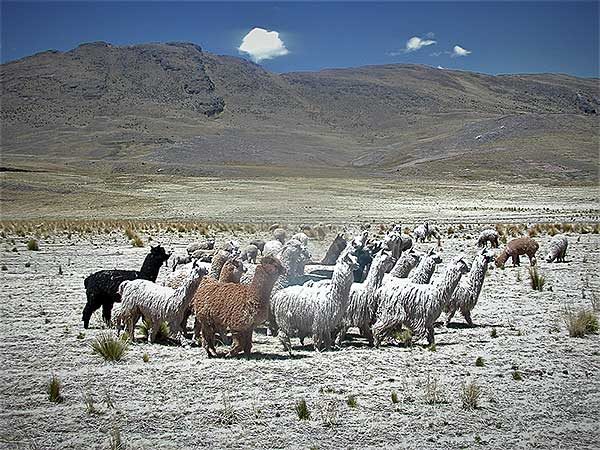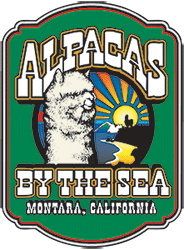
We Love Alpacas – what else can we say? Yes, we simply love them! Alpacas were first imported into North America in 1984. Alpacas by nature are a very hardy bunch and are often referred to as “easy keepers”. They are herd animals and thrive in the herd environment. Alpacas grow a beautiful fleece that is harvested once a year. There are two types of alpacas – the Huacaya alpaca and the Suri alpaca.
In the photo a large group of breeding quality males of both types move across the open plain called the altiplano. We refer to the Males as Machos and the Females we refer to as Embras. The baby alpaca is called a cria.
Alpacas give back more than we can ever give them. Spend a few short minutes with the alpacas and their inquisitive and humble nature seem to make all of our problems go away. That isn’t to say alpaca ranching is easy, although for many people alpacas are a great remedy.
In ancient times there were camelid progenitors inhabiting North America. Some of these early ancestors migrated through the Bering Straight to inhabit Eurasia. These animals evolved into Bactrian camels and further south into Dromedary camels.
Some of these early camelids migrated south through Central America to South America. Today there still wild camelids living on the South American altiplano. The wild Vicuña and Guanaco are still living in South America today and are protected. Through the study of fossils and dentition it is widely believed that alpacas originate from Vicuña lines and that Llamas originate from Guanaco lines.
Alpacas and Lamas were domesticated from these wild camelids and have been selectively bred for over 6000 years. Alpacas and llamas were domesticated by the pre-Inca societies and they utilized selective breeding practices to create several types of alpacas and llama phenotypes. Today’s alpacas and llamas are the result of these traditional advanced breeding practices. These breeding secrets were handed down generation after generation. All over the world many modern day breeders enjoy raising alpacas. They are very popular and we are grateful that these wonderful people bred such beautiful creatures down through history.

